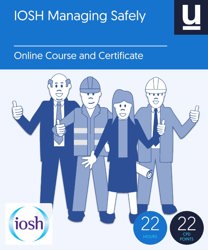Despite employer's best efforts, it is an unfortunate fact that a significant number of workers are involved in accidents and incidents at work each year. When they do occur, it is essential that employers carry out a thorough incident investigation in order to understand what went wrong, and what they can do to prevent a similar event from recurring.
In this article, we will look at the legal requirements surrounding reporting accidents, when an incident should be reported to the Health and Safety Executive (HSE), and how to complete said report.
What is RIDDOR?
RIDDOR, or the Reporting of Injuries, Diseases and Dangerous Occurrences Regulations 2013, is a law that requires employers to keep records of certain occurrences, and report them to the HSE. These occurrences include:
- Work-related accidents that result in death or certain specified/major injuries.
- Diagnosed cases of certain industrial diseases.
- Accidents that affect non-workers and members of the public.
- Certain incidents that could have caused harm.
There are also a wider range of occurrences that do not need to be reported under RIDDOR, but must be detailed in an accident book.
Any reports must be made as soon as possible and be completed by a responsible person, such as a manager.
Why is it important to report accidents and near misses?
As well as being a legal requirement, reporting certain accidents, incidents and near misses to an enforcing authority, such as the HSE, allows them to undertake or contribute to an accident investigation as soon as possible. It also provides them with information about the risks that are most prevalent in workplaces across the country, which they can use to target their work and provide advice.
How to report accidents under RIDDOR
Let's look at the steps that should be taken before, during and after reporting an accident or incident. Be aware that these steps assume that an accident has just occurred, so some of them may be different or unnecessary depending on the specific event in question, such as cases of disease or ill health at work.
Step 1: Check for danger
Before assisting someone who has been injured in an accident, it is important to ensure that it is safe to approach them, and that the surrounding area is free from danger.
If the source of the danger can be removed easily, this should be done as soon as possible. For example, it may be possible to easily turn off an item of machinery or piece of equipment.
Step 2: Get medical assistance
Once the area is safe, the injured person or people must be looked at by a first aider to assess their injuries and ensure that they get the relevant medical assistance that they need.
This should always be done, even if those involved in the accident do not appear to have been injured.
Step 3: Report the event to management
At this point, management must be made aware of the event if they are not already. This is because any reports made under RIDDOR must be completed by a responsible person, such as a manager or other senior person.
Step 4: Record the event
Once management are aware of the event, it should be recorded in the organisation's accident book. Doing so will help them to identify trends of frequently occurring events that may require investigating.
Step 5: Report the event
If an incident requires reporting under RIDDOR, then this must be done at this stage. This report must be made as soon as possible, as RIDDOR requires that most reports are received by the HSE within 10 days of the incident occurring.
Reports can be made on the HSE website. They also operate a telephone service that can be used in the event of fatal or serious injuries.
A RIDDOR report must contain the following:
- The date that the report is submitted.
- The personal details of the person making the report (including their name, job title, etc.).
- The details of the organisation, such as its name and address.
- The location, date and time of the incident.
- The personal details of those involved in the event (including their name, job title, etc.).
- A description of the injury, illness or event.
Step 6: Investigate the event
Finally, a full investigation should be carried out in order to establish what the causes of the event were, and what needs to be done to prevent something similar from recurring. This might include changes to working practices, equipment and risk assessments.
For more information on RIDDOR and accident investigation, consider taking our IOSH Working Safely or IOSH Managing Safely courses:


